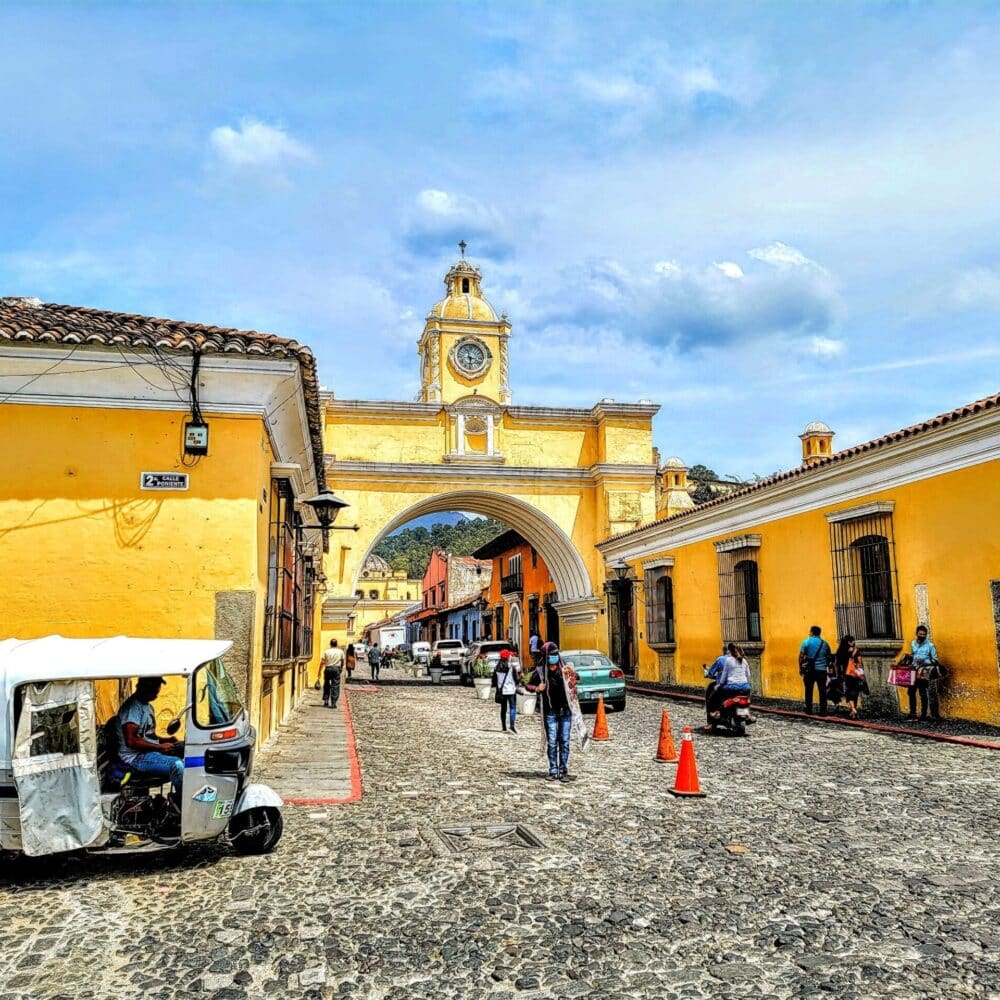The iconic Santa Catalina Arch is one of the most photographed landmarks in all Latin America. Built in the late 17th century, the Arch enabled the cloistered nuns living in the Convent of Santa Catalina Martir to travel between their two buildings. Each year, hundreds of thousands of visitors to Antigua pose in front of this brightly yellow-colored walkway with Iglesia La Merced to its north and Volcán de Agua to its south. You will also find dozens of shops and restaurants along its busy street.
“Santa Catalina Arch in Antigua Guatemala amidst a bustling crowd of tourists. The place is kept spotlessly clean and is conveniently located in the middle of the street. It is not only a historical icon, but also a free attraction surrounded by charming Guatemalan stores. Perfect for capturing memorable moments and immersing yourself in Guatemala’s rich cultural atmosphere.” -Rene de la Croix
“It’s like you are in a dream every time you walk beside this beautiful and enigmatic architectural piece. Plus, you add the volcano in the background, just absolute bliss.” -Luis Secaida
“I visited the arch on a Tuesday morning around 7:15am and it was very peaceful. I pretty much had the arch to myself besides a local vendor who was on the street corner. I walked over again at night and the arch looks just as beautiful lit up.” -Crystal F.

Please note that many of the entrance fees for landmarks, parks, and museums are subsidized by the government for Guatemalan citizens. You may notice a price difference for foreigners.